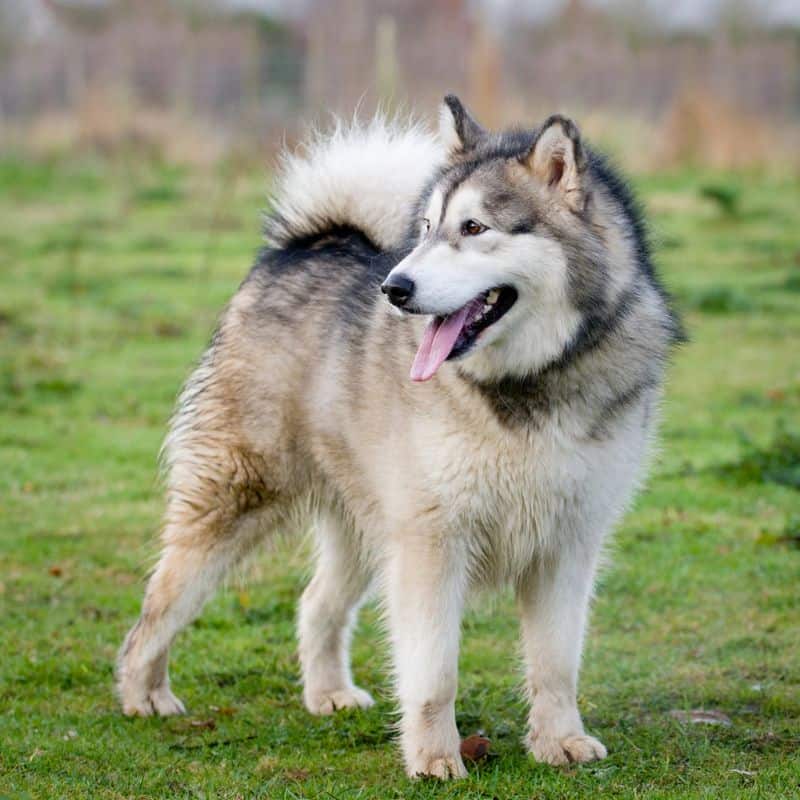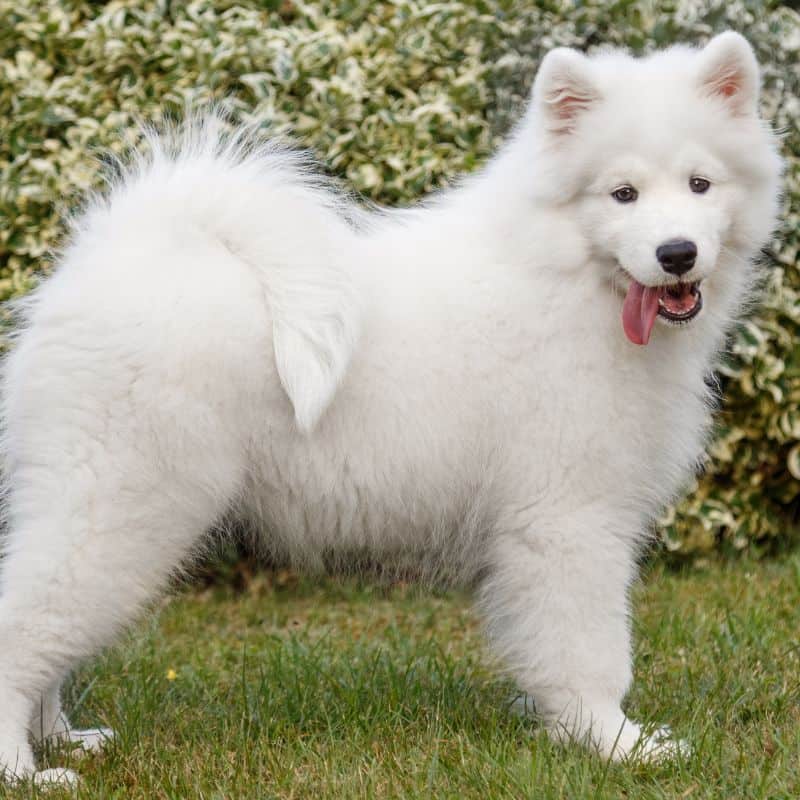Huskies are known for their cold-weather tolerance and lovable personalities. They’re a hardy breed that makes for excellent family companions, but does this translate to a longer lifespan? How long do huskies live?
The average lifespan of huskies is between 12 to 15 years. Every Husky breed is built differently; some don’t reach 12 years, while others may surpass 15 years. The most popular Husky breed, the Siberian Husky, lives for 12-15 years.
In this article, we will discuss the common health problems Huskies face and how long different breeds of Huskies live in more detail.

3 Common Health Problems Faced by Huskies
Mostly, Huskies suffer from genetic ailments, such as bleeding disorders, visual problems like Cataracts, Epilepsy, and high blood pressure that shortens their lifespan.
Compared to other dog breeds, Huskies are physically stronger but still prone to several diseases. Some of them are:
1. Zinc Responsive Dermatosis
Compared to other dog breeds, Huskies need a higher-than-average amount of Zinc. Therefore, they can suffer from a disease called Zinc Responsive Dermatosis.
Common symptoms of this disease include poor growth, hair loss, thickened foot pads, lethargy, and weeping between the toes.
2. Corneal Dystrophy
Corneal Dystrophy is a hereditary disease in Huskies that mainly affects their cornea.
The affected huskies have small white dots in their cornea and experience blurred vision. When outdoors, a husky having Corneal Dystrophy might show visual discomfort.
There are different types of treatments, depending upon the severity of the disease.
3. Hypothyroidism
Hypothyroidism is a deficiency of the Thyroid hormone in Huskies that regulates their metabolism.
Common symptoms include black patches on the skin and hair loss, usually on the dog’s tail, trunk, and back of the rear legs.
How Long Do Different Husky Breeds Live?
Huskies are divided into many breeds. Each of them has a different average lifespan.
To help you get a better overview, here are the different expected lifespans of eight different Husky breeds:
1. Siberian Huskies
The average lifespan of a Siberian Husky is around 12-15 years. However, it is not definite and depends upon various other factors, such as exercise, diet, and health problems. In ideal conditions, some Siberian Huskies can even live up to the ripe age of 16.
Mostly, Siberian Huskies are prone to viral and bacterial infections, such as Rabies, Parvo, and Distemper.
To elongate the lifespan of your Siberian Husky, you need to ensure that it’s getting proper exercise, being fed a nutritious diet, and being taken to the veterinarian regularly for checkups and vaccinations.

2. Alaskan Huskies
On average, an Alaskan Husky lives for 12 to 15 years. Alaskan Huskies are particularly healthy and often used for dog sled racing and sprint competition.
However, many fall victim to complex genetic problems, such as progressive retinal atrophy, blindness, hypothyroidism, and Vocal Cord Paralysis, resulting in breathing problems.
3. Labrador Huskies
Labrador Husky is another dog breed that primarily acts as a sled and companion dog. It has an average life span of 10 to 13 years and mostly lives in North America’s far northern regions.
Labrador Huskies are generally friendly and intelligent, but they continuously shed and require a lot of exercise and engagement to stay entertained.
Generally, a Labrador Husky is a healthier dog breed but often falls victim to two major diseases; Hip Dysplasia (common in large-sized Labrador Huskies) and Progressive Retinal Atrophy.
4. Samoyeds
A Samoyed is another breed of domesticated Huskies that assists with hunting, herding, protection, and sled-pulling. These fluffy clouds/dogs have an average lifespan of 12 to 14 years.
Even in the later years, Samoyeds are known to maintain their playful energy and physical strength.
However, Samoyeds are not always energetic and can fall victim to many diseases, including Diabetes, Progressive Retinal Atrophy (PRA), and several other genetic health issues.

5. Miniature Huskies
The famous lookalike of the Siberian Husky, the Miniature Husky, is another playful and energetic dog. It can live from 12 to 15 years and requires daily exercise and energy stimulation.
The most common health problems faced by Miniature Huskies include genetic conditions like Progressive Retinal Atrophy, Glaucoma, Seizures, and Laryngeal Paralysis. Still, fortunately, the breed has a very low risk for Hip Dysplasia.
6. Greenland Dog
Greenland Dogs are another breed of Huskies, mostly kept as sled dogs. These hounds can live up to 12-14 years.
Greenland Dogs are known for their speed, strength, and toughness in drawing sleds, hunting, and racing.
Although many people are working to preserve the Greenland Dog’s sledding culture, the breed’s population keeps decreasing due to climate change.
7. Alaskan Malamute
One of the oldest sled dogs, the Alaskan Malamute, has an average lifespan of 10 to 12 years. They are built to work in rough environmental conditions but are also affectionate, friendly companions.
Occasionally, the Alaskan Malamutes suffer from seizures, gastric torsion, Hemeralopia (impaired vision in bright light), and Polyneuropathy (neurological disorder).
The primary health issue encountered by this breed is Canine Hip Dysplasia (CHD) which causes weakness and pain in the dog’s rear legs, limiting its activity.
8. Chinook Dog
The Chinook Dog is one of the rare breeds of Huskies and varies significantly in size. On average, a Chinook lives for 13 to 15 years.
Chinooks have no breed-specific health problems, but they predominantly suffer from hereditary health problems such as Hip Dysplasia, Epilepsy, and Atopy.
Chinooks were initially bred for sled pulling but are now popular as family pets.
Final Thoughts On The Lifespan Of Huskies
Huskies are generally known for their playful/energetic personality and athletic build.
Different breeds of Huskies have different average lifespans, depending upon their surroundings, diet, and time spent on exercise.
Taking your Husky for regular veterinarian check-ups can increase their health index, thus helping them live longer and healthier lives.

FAQs
Is There A Difference Between The Life Expectancy Of Female And Male Huskies?
Female Huskies tend to live longer than their male counterparts and also tend to be easier to train.
Are Any Husky Breeds Extinct?
A breed that used to be a popular sled dog, the Sakhalin Husky, was unfortunately declared extinct in 2012.
Which Is The Oldest Husky Alive To Date?
The oldest Husky alive to date is a Siberian Husky in the USA, who recently turned 19 in September 2022. Another contender is LouLou, who was 18 in September 2021.


